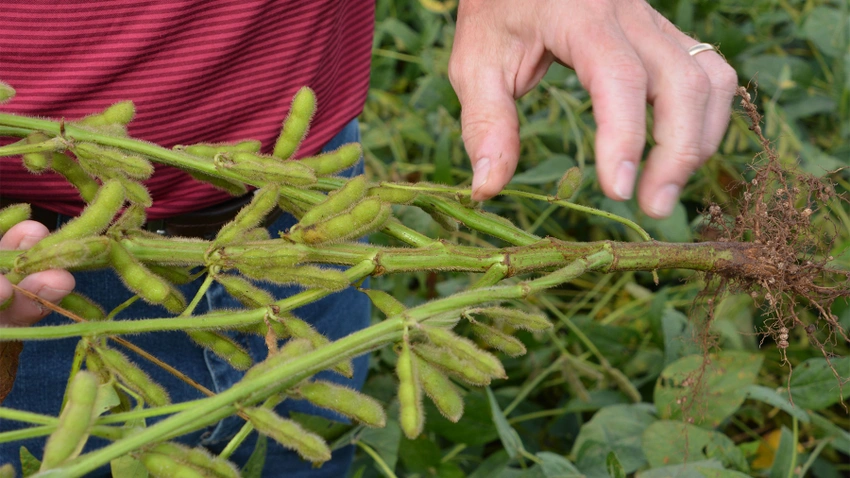Every year since the Soybean Watch project began in 2017 has been a wild ride courtesy of the weatherman. The 2023 version was no exception. It featured early rains delaying planting until mid-May, followed by hail, early drought, mild weather through the heart of the season, and then more drought.
“Each year has been unique, and that may be why we keep learning new things each year,” says Steve Gauck, a regional manager for Beck’s, based near Greensburg, Ind. Beck’s has sponsored the Soybean Watch project from the beginning.
Here are five lessons learned or relearned this year through Soybean Watch ’23, according to Gauck:
1. Early planting pays. This year’s field could not be planted until mid-May, but that was still earlier than some other project years.
“Planting early gives plants the opportunity to grow longer and put on more pods,” Gauck says. “Searching for high yields is all about setting up plants with the best opportunity to produce a maximum number of pods, with as many beans per pod as possible.”
2. Monitoring planter performance matters. Uniform stands across the field don’t just happen — they’re planned, and those plans are executed, Gauck says. In the Soybean Watch ’23 field, one row near the outside of the planter on one side developed an issue that wasn’t detected.
“There were irregular skips,” Gauck says. “The right amount of beans were going out, but they weren’t distributed evenly in the seed trench. Something likely got caught and interfered with placement. You won’t likely catch something like that with a seed monitor. You’ve still got to examine each row carefully.”
3. Early weed control is a must. This year proved that weeds allowed to grow with the crop can impact the ability of plants to produce top yields. Taking weeds out with postemergence sprays isn’t enough, Gauck says. Damage to plants and yield may already be done. Get on top of weeds early.
4. Hail doesn’t always hurt yield. Light hail events early rarely mean significant yield loss. Hail hit this field at around V3 leaf stage. While leaves were dinged up, plants quickly grew out of the damage.
“Walk away for a few days, unless the damage is severe,” Gauck says. “Most of the time, soybeans will come back and yield well. If stems are bruised or broken, it may be different. Otherwise, soybeans can usually respond and get back to growing.”
5. Soybeans need water for top yields. The difference between dry corners and irrigated areas in this field were significant, varying from the mid-50s to low 80s in bushel per acre yields.
“Timing of moisture is critical,” Gauck notes. “We observed in previous years and confirmed again this year that you want to keep watering, if necessary, even if leaves begin turning yellow. Ample moisture very late helps plump up bean size and supports new pods and beans, which keep developing near the tops of plants.”
Source : Farm Progress

